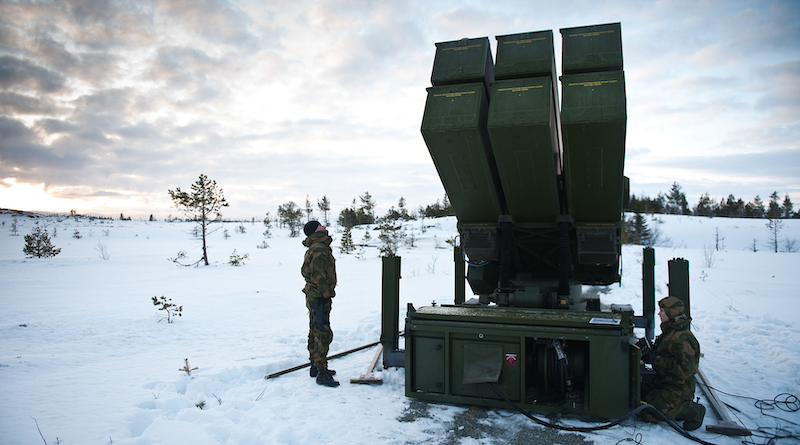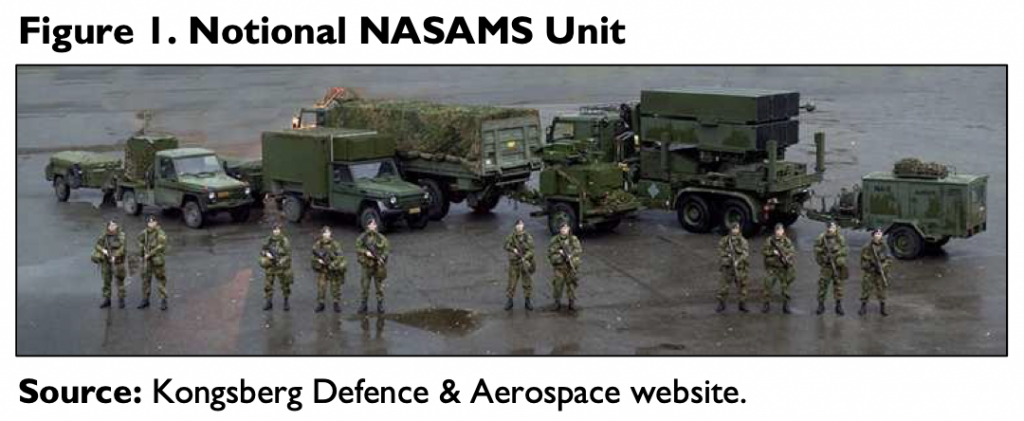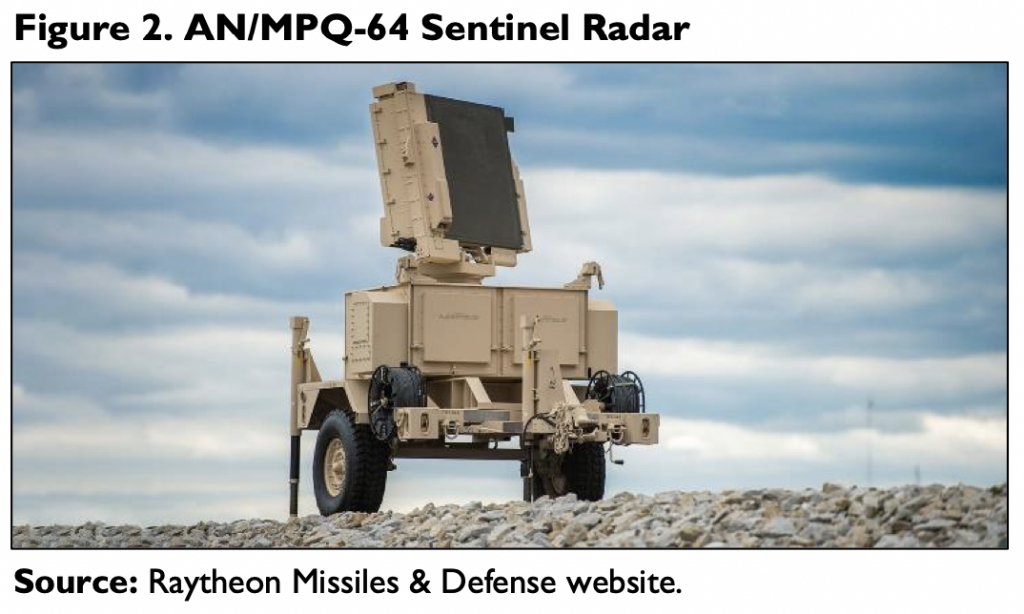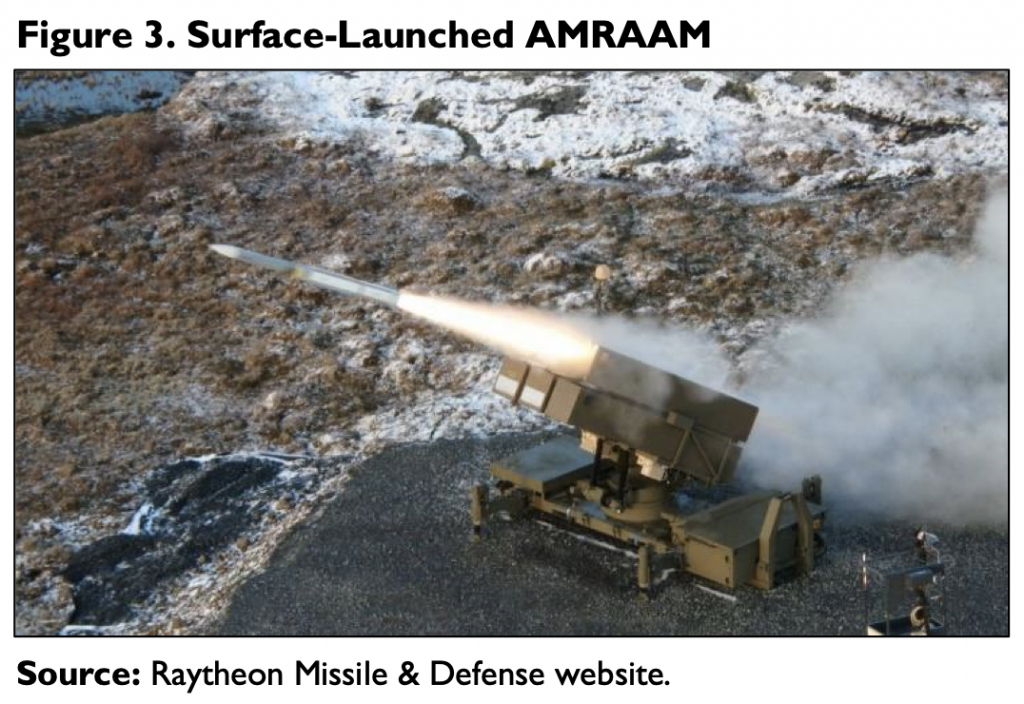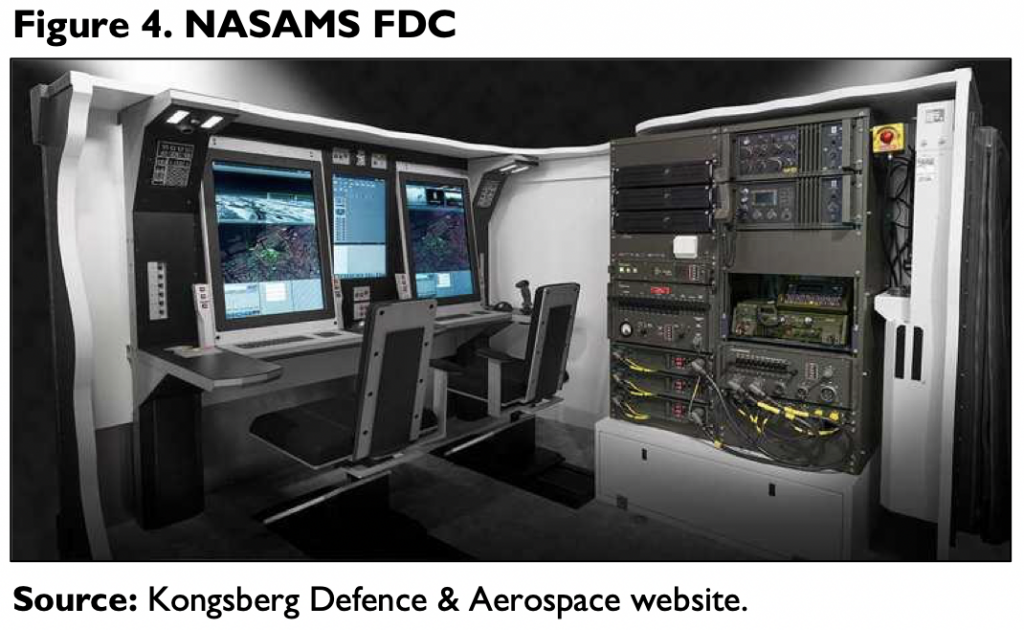National Advanced Surface-To-Air Missile System (NASAMS) – Analysis
By CRS
By Andrew Feickert*
Background
As part of past U.S. arms and equipment transfers to Ukraine, the only dedicated air defense system provided has been the FIM-92 Stinger man-portable, disposable, short- range air defense system. The Biden Administration has announced plans to provide the National Advanced Surface-to-Air Missile System (NASAMS) to Ukraine to protect against certain Russian air threats.
NASAMS increases not only the range at which air threats can be engaged, but also the range at which air threats can be detected and tracked. NASAMS is a reloadable system and provides a capability to engage multiple targets, whereas the Stinger can engage only a single target.
What Is the National Advanced Surface- to-Air Missile System (NASAMS)?
The National Advanced Surface to Air Missile System (NASAMS) (Figure 1) is a mid-range air defense system designed and developed jointly by Raytheon (United States) and Kongsberg Defence & Aerospace (Norway).
Militaries can deploy NASAMS to identify, engage, and destroy fixed and rotary-wing aircraft, cruise missiles, and unmanned aerial vehicles (UAVs). It is designed to protect high-value assets and population centers against air-to- surface threats. According to the Missile Defense Advocacy Alliance, a nonpartisan, nonprofit missile defense education organization:
“NASAMS reached operational capability in 1994 and was first deployed by the Royal Norwegian Air Force. The system can engage 72 targets simultaneously in active and passive modes and, using active seeker missiles, can intercept targets beyond visual range. The NASAMS is armed with three launchers, each carrying up to six missiles.”
NASAMS consists of three primary components: the AN/MPQ-64 Sentinel Radar, the AIM-120 Advanced Medium Range Air-to-Air Missile (AMRAAM), and the Fire Distribution Center (FDC).
AN/MPQ-64 Sentinel Radar
According to the U.S. Army, the Sentinel Radar (Figure 2) can detect UAVs, cruise missiles, and fixed and rotary-wing aircraft. It features an X-Band, 360-degree phased array air defense radar with a 75-kilometer (approximately 47-mile) range to identify targets.
Sentinel is equipped with an electronic counter-counter-measure (ECCM) system that includes two subsystems—an identification friend or foe (IFF) subsystem for positive identification of friendly aircraft, and a noncooperative target recognition capabilities subsystem to identify enemy aircraft. Sentinel is trailer- mounted and pulled by either a High Mobility Multipurpose Wheeled Vehicle (HMMWV) or an M1082 Family of Medium Tactical Vehicles truck. The United States has already provided Ukraine a number of Sentinel radars and tactical vehicles, so Ukrainian forces should be familiar with these systems.
AIM-120 Advanced Medium Range Air-to-Air Missile (AMRAAM)
According to Raytheon, the AMRAAM (Figure 3) is a dual-role missile that offers operational flexibility in air-to- air and surface-launch engagements. In the air-to-air mode, AMRAAM’s advanced active guidance sensor and seeker supposedly can rapidly acquire targets in challenging environments. In the surface-launch mode, NASAMS permits countries to use the same missile in either role with no modifications.
Reportedly, AMRAAMs employed by NASAMS have a 40-kilometer (approximately 25-mile) range, and longer-range missiles are currently under development. AMRAAMs are subject to the Department of Defense’s (DOD’s) Enhanced End-Use Monitoring (EEUM), which is used to verify that defense articles transferred by the United States to foreign recipients are procured in accordance with transfer agreements and used only for their intended purposes.
Kongsberg’s Fire Distribution Center (FDC)
According to Kongsberg, its FDC (Figure 4) is a proven and fielded air defense and surface-to-surface missile (SSM) command and control module. Kongsberg claims its FDC is fully interoperable with national, EU, and NATO forces.
NASAMS Use
According to Raytheon, NASAMS is owned by 12 countries and has been integrated into the U.S. National Capital Region’s air defense system since 2005. In addition to the United States, Norway, Finland, Spain, the Netherlands, Oman, Lithuania, Indonesia, Australia, Qatar, Hungary, and one undisclosed country employ NASAMS for homeland defense and defense of other critical assets.
According to Kongsberg, NASAMS’s radar and launcher elements can be deployed over a large area separated by more than 20 kilometers (about 12.5 miles) from the FDC, providing extended area coverage. Another benefit is that dispersing NASAMS elements can potentially increase survivability against enemy air and ground attacks.
NASAMS Provided to Ukraine
On July 1, 2022, DOD announced it would provide two NASAMS batteries to Ukraine through DOD’s Ukraine Security Assistance Initiative (USAI). Defense items provided under USAI require congressional notification at least 15 days prior to transfer unless the Secretary of Defense determines extraordinary circumstances exist that impact U.S. national security.
On August 24, 2022, the Biden Administration announced it would provide eight total NASAMS batteries to Ukraine through USAI. On August 26, 2022, the U.S. Army awarded Raytheon Missiles & Defense a $182 million contract for delivery of two NASAMS batteries, including training and logistical support to Ukrainian forces. On November 7, 2022, Reuters reported that Ukraine had received its first NASAMS unit. On November 30, 2022, the Army reportedly awarded Raytheon Missiles and Defense a $1.2 billion contract to provide six NASAMS batteries to Ukraine. The Army reportedly “will work with industry partners to shorten the 24-month production lead time associated with production and delivery of NASAMS.”
Potential Oversight Issues for Congress
As Congress continues to monitor the conflict in Ukraine and considers additional military assistance for Ukraine, some potential oversight issues include the following:
- Russian air attacks against Ukrainian cities, military and civilian facilities, and military units have employed UAVs, cruise missiles, and fixed and rotary-wing aircraft, as well as a variety of ballistic missiles. While it is not explicitly stated by the U.S. government or developers, does NASAMS have any capability to detect, intercept, and destroy ballistic missiles? If not, are there plans for the United States and/or NATO nations to provide Ukraine with a ballistic missile defense capability or system?
- How long will it take to supply all eight NASAMS batteries to Ukraine and train operators and maintenance personnel?
- Given increased Russian air and missile attacks against Ukraine, are the eight NASAMS batteries pledged by the United States adequate to defend Ukrainian interests? If not, how many NASAMS batteries are needed? Does the United States have the ability to provide these systems without undue risk to U.S. national security?
- Is NASAMS fully interoperable with other non- NATO/EU air and missile defense systems being used by or supplied to Ukraine? If not, could this result in gaps in protection that might be exploited by the Russians?
- Does the Biden Administration have a long-term sustainment plan for NASAMS? Are there estimates as to how much sustainment might cost? What authorities does the Administration plan to use for long-term NASAMS sustainment?
*About the author: Andrew Feickert, Specialist in Military Ground Forces
Source: This article was published by Congressional Research Service (CRS)

